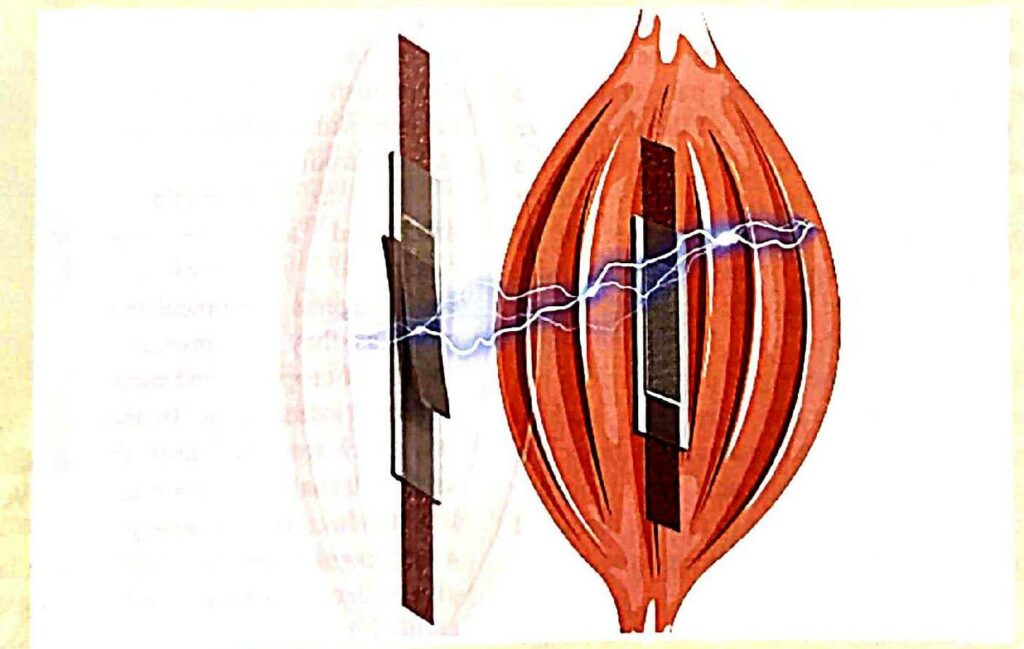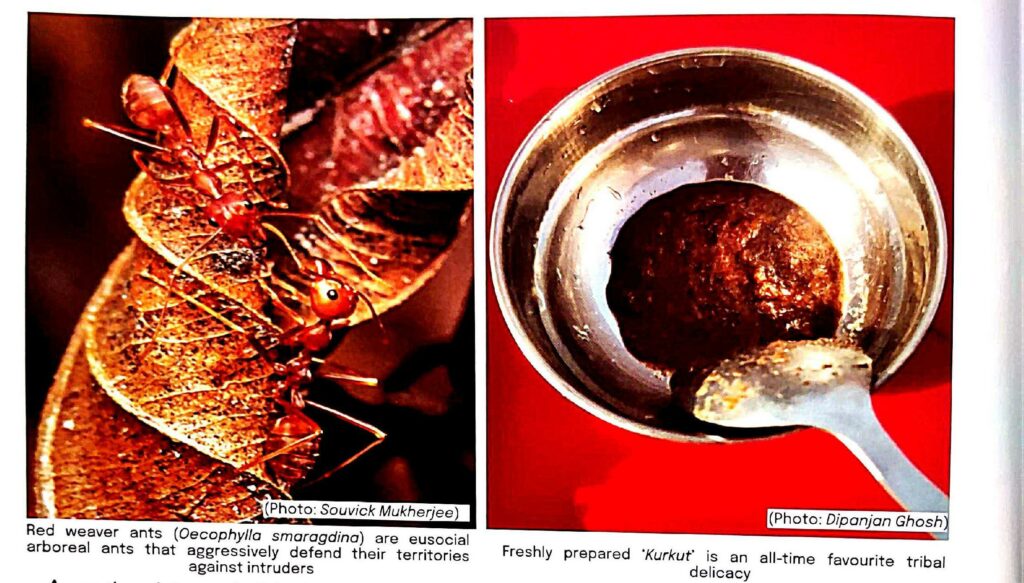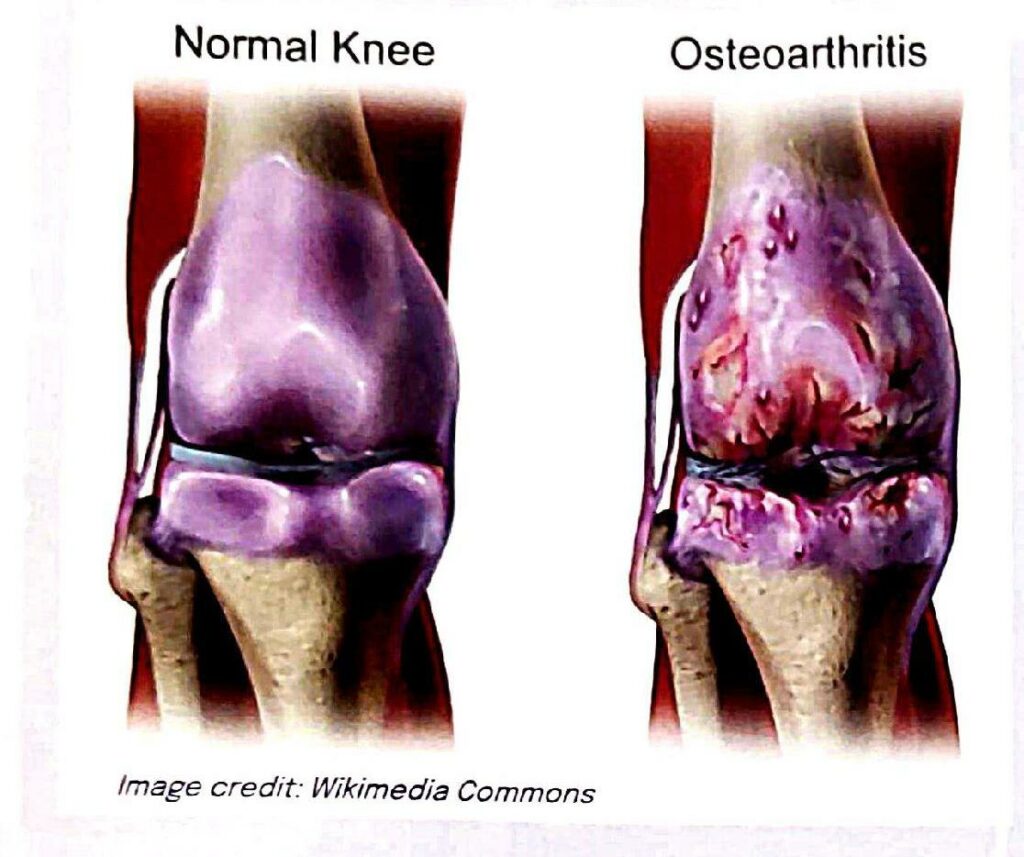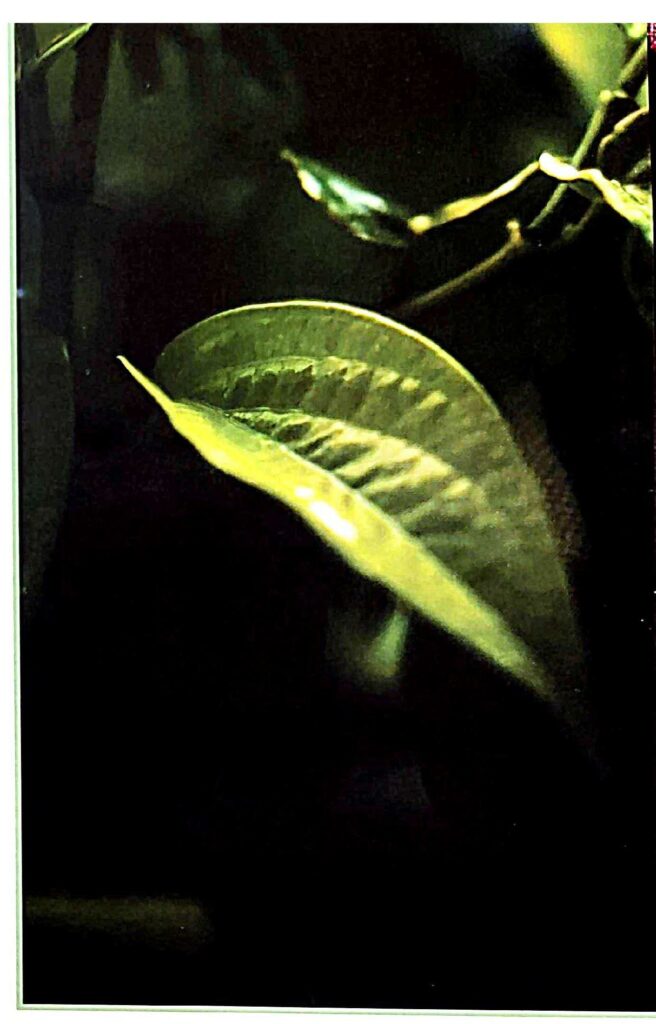Science Reporter Magazine Summary September 2023 for UPSC Exam
Science Reporter Magazine Summary September 2023 Edition
- Science Reporter Magazine Summary September 2023 Edition
- News in Brief from September 2023 Edition:
- Article 1: Chandrayaan-3 Achieves a Historic Feat!
- Article 2: Green Blood to Fight Cancer
- Article 3) Chiral Bose-Liquid: A New State of Matter
- Article 4) Consumerism in Outer Space: Is it sustainable?
- Article 5) Timekeeping on the Moon: Shaping Lunar Explorations
- Context:
- Why to study the Moon?
- What is In-Situ Resource Utilization (ISRU)?
- Strategic Importance of Moon:
- Various Lunar Missions:
- Timekeeping for explorations on the Moon.
- Importance of precise timekeeping on the Moon:
- Technical Challenges in Lunar Timekeeping:
- Overcoming the above technical challenges:
- Role and initiative of BIPM
- Way Forward:
- Article 6) Himachal Floods Crisis due to ignoring fragile ecosystems.
- Article 7) Unfolding the story of the Betel Nut
- Article 8) What is Ham Radio
- Article 9) Kurkut- A tribal delicacy
Lets dive into the September 2023 edition of Science Reporter Magazine, readers are welcomed into fresh insights & scientific discoveries. The Science Reporter Magazine September 2023 edition is your gateway to staying at the forefront of Science and Technology. Join us as we explore the detail summary of this edition, let’s start…
News in Brief from September 2023 Edition:
1) Al-based model to Predict Knee Osteoarthritis Severity from X-ray Images
- KNEE Osteoarthritis, which has a frequency of 28% in India, is the most prevalent musculoskeletal condition in the world.
- Since complete joint replacement at an advanced stage is the only treatment option for knee OA, early diagnosis is crucial for pain management and behavioral changes.
- To automatically determine the severity of knee osteoarthritis (OA) using X-ray pictures, researchers from the Indian Institute of Technology Guwahati have developed a Deep Learning (DL)-based framework called Osteo HRNet.
- This Al-based model can be used to gauge the disease’s severity and support doctors remotely for a more precise diagnosis.
2) Self-Sensing Electric Artificial Muscles

- Queen Mary University of London researchers have created a robust and adaptable new kind of self-sensing electric variable stiffness artificial muscle.
- This ground-breaking artificial muscle can quickly change its stiffness by applying different voltages and demonstrates flexibility and stretchability similar to natural muscles, allowing it to conform to varied shapes.
- The ground-breaking technique has numerous uses, including soft robotics and medical technologies.
3) Sensor Novel Thermal Sensor
- Excess heat produced by mechanical or electrical equipment is a symptom or cause of inefficient operation.
- In many situations, embedded sensors that track heat movement could assist engineers in changing the behavior or designs of devices to increase their efficiency.
- For the first time, scientists have built a tiny sensor that can see heat flow in real time by utilizing a novel thermo-electric phenomenon.
- The sensor is also quick, cheap, and simple to build using tried-and-true procedures, allowing it to be embedded deep into devices where other types of sensors are impracticable.
4) Innovative Wearable Sensor for Measuring Sweat Lactate Levels during Exercise
- Exercise intensity can be measured with WEARABLE microfluidic sensors.
- Air bubbles, though, affect the measurement. Researchers from Japan have developed a wearable sensor for continuously monitoring sweat lactate during exercise, which incorporates a bubble-trapping region in its microfluidic system.
- Monitor lactate concentration in sweat is a good indicator of present in the sweat can get into the microfluidic channels, hindering the research.
- The suggested technologies can make it easier to manage an athlete’s training and keep an eye on their health.
Article 1: Chandrayaan-3 Achieves a Historic Feat!
- With a secure, soft, and exact touchdown of the spacecraft’s Lander on the lunar South Pole, INDIA’S Chandrayaan-3 mission accomplished a historic milestone.
- Chandrayaan-3’s landing module, which included the lander Vikram and the rover Pragyan, landed on the moon on August 23, 2023, making India the fourth nation (after the US, Russia, and China) to accomplish the difficult feat given the lunar south pole’s cratered terrain.
- An additional “significant technological leap” was made by India with its Chandrayaan-2 Moon mission in 2019, following the 2008 Chandrayaan-1 mission to the Moon’s success.
- However, the lander Vikram began departing from its targeted trajectory during the Fine Braking phase at a height of around 2.1 kilometers, which led to a crash landing.
- This prevented its intended soft landing on the lunar surface. However, Chandrayaan-2’s orbiter is still in operation.
- However, setbacks are stepping stones to success, as the saying goes. This was demonstrated by ISRO’s accomplishment of a soft landing of Chandrayaan-3’s Vikram lander on the lunar surface at the South Pole.
Sensors involved:
- A multitude of sensors on the lander, including an accelerometer, altimeters, Doppler velocimeter, star sensors, inclinometer, touchdown sensor, and cameras for danger detection and avoidance, helped to guarantee a successful touchdown.
Vikram Lander:
- The box-shaped Vikram lander has four landing legs that cushion the impact when it makes contact with the Moon.
- It contains four scientific payloads that will conduct lunar surface studies.
- The Instrument for Lunar Seismic Activity (LSA), a MEMS-based seismometer to detect minute ground displacement, velocity, or acceleration caused by lunar quakes;
- a thermal probe called Chandra’s Surface Thermo-physical Experiment (ChaSTE) to measure the vertical temperature gradient and thermal conductivity near the polar region;
- the Laser Retroreflector Array (LRA) to comprehend the dynamics of the Earth-Moon system.
What follows the landing?
- The Pragyan mobile laboratory will gather samples, examine the Moon’s geology and chemical composition, and identify and calculate the amount of various elements close to the landing location. The Rover is anticipated to run for one lunar day (14 days on Earth).
- The Chandrayaan-3 mission’s resounding success is evidence of India’s unwavering dedication to space exploration and scientific progress.
- It also serves as motivation for many young people across the country who want to become scientists, engineers, innovators, or business owners.
Article 2: Green Blood to Fight Cancer
- The ‘blood’ in question is actually just wheatgrass juice.
- It can also be ingested frequently as part of a healthy diet without the need for transfusions.
- It strengthens the immune system and wards off illness.
- It is thought that cooking alters the nutritional value of wheatgrass. As a result, it is consumed raw and is also sold in markets as a supplement in the form of packaged drinks, powders, and capsules.
Findings of the research:
- When the potential of wheatgrass juice was evaluated against several malignancies, including breast cancer, oral cancer, colon cancer, and leukemia, some scientific research produced encouraging findings.
- For instance, research on oral cancer cells in a murine leukemia model showed that wheatgrass extract can lower the amount of these cancer cells. Wheatgrass juice is rich in oxygen due to the high concentration of chlorophyll and its structural resemblance to hemoglobin.
- Oxygen aids in the body’s detoxification process and slows the development of cancer cells. This is because oxygen enrichment of their surroundings inhibits the growth of cancer cells, which need an oxygen-deficient environment to survive.
- Additionally, the many antioxidant enzymes in green blood aid in the removal of free radicals. Our bodies produce these free radicals on a daily basis as a result of cell metabolism. These free radicals build up too much in the body, causing cell damage, aging, and an elevated risk of cancer, among other health problems. As a result, frequent body detoxification is crucial.
- These antioxidant enzymes are also excellent in preventing DNA damage.
- A pilot trial involving 60 breast cancer patients found that individuals who regularly drank wheatgrass juice experienced fewer side effects from chemotherapy than the chemotherapy-only control group. Juice consumption on a daily basis in the study also decreased the dosage of the anti-cancer medications.
Disadvantages:
- Therefore, combining traditional cancer treatment with eating wheat and drinking brass juice is good. However, drinking wheatgrass juice also has a few minor disadvantages.
- These include vertigo brought on by the flavor’s disagreeable grassiness and potential microbial contamination brought on by wheatgrass’s early harvest.
- There is presently little information available about wheatgrass juice’s potential anti-cancer properties.
- More investigation is likely to reveal more details about its effectiveness in eliminating cancer cells.
Article 3) Chiral Bose-Liquid: A New State of Matter
- We encounter solid, liquid, and gaseous phases of matter on a daily basis. The behavior of matter changes dramatically from what we observe in our macroscopic world when it reaches the quantum realm, which occurs at temperatures close to absolute zero or inside the atom.
- It is referred to as a “frustrated quantum system” by physicists because it generates limitless possibilities as a result of particle interaction, some of which may result in new quantum states of matter.
- The researchers from University of Massachusetts have created a frustration machine, a bilayer semi-conducting device with an electron-rich top layer that can roam freely and “holes” in the bottom layer that roving electrons can occupy.
- The machine activates in order to produce a local imbalance, which prevents the electrons from having enough holes to file when the two layers are pushed very near together. As a result, a new state of matter is produced, the Chiral Bose-liquid state.
What is Chiral Bose Liquid state?
- The reason the electrons in the Chiral Bose-liquid state move or behave differently from their mirror-image counterparts, producing distinctive and asymmetric properties, is why the term “Chiral” has been employed.
- It comes from a Greek term that means “hand” and is used to describe something that cannot be superimposed on its mirror counterpart.
- In this condition, electrons display special characteristics and behaviors.
- They are highly organized, synchronized, and robust to change spin, which is a defining trait of subatomic particles, because they may freeze into predictable patterns.
- Even particle collisions and the application of magnetic fields have no effect on them.
- The collective behavior of the particles in the Chiral Bose-liquid state when an outside particle collides with one of them is a particularly fascinating feature of this state.
- Because of the long-range entanglement present in this quantum system, all of the particles behave collectively rather than individually.
Challenges faced during observation of this state:
- Due to its inherent complexity, observing the elusive Chiral Bose-liquid state has proven to be a difficult task.
- To get around the problem, a group of Chinese scientists from Peking University developed an experiment that made use of a powerful magnetic field, enabling them to monitor the motion of the electrons.
- This ground-breaking method made it possible to measure the motions of electrons as they interact dynamically.
Way Forward:
- The researchers’ successful magneto-transport tests provided the first verifiable demonstration of the Chiral Bose-liquid state, also known as the “exitonic topological order.”
- In addition to shedding light on the interesting behavior of matter under severe quantum conditions, it also creates new opportunities for using quantum phenomena in research and real-world applications, such as the advancement of technology and cryptography.
Article 4) Consumerism in Outer Space: Is it sustainable?
Context:
- For the British corporation OneWeb, the Indian Space Research Organization (ISRO) launched 36 satellites into a medium orbit in March of this year. The startup intends to offer internet services using 648 satellites in the sky.
- OneWeb, a partner of Bharati Airtel, is not the first to achieve this, but Amazon has also developed its own Kuiper project.
- Also 42,000 satellites, to be exact, will be used by US based SpaceX to provide internet services.
- Space Tourism is another space-related activity that exhibits a similar consumerist thrust. Other space technology firms, including SpaceX, have been putting their concepts to the test.
- The question that arises is whether such adventures are sustainable or even desirable?
Areas of Concern:
Concerns about the consumerist use of space mostly revolve around three issues: the problem of space debris, legal and regulatory issues, and potential environmental effects. Let’s analyze each of them in the context of our current knowledge and predictions for the future.
Space debris:
- Functional objects in orbit are classified as space debris, often known as space junk, and they are made of a range of materials. They might be left behind Tools and equipment lost when performing maintenance on space stations or space walks, satellites, empty rocket shells thrown away during launch, rocket motor fragments, and numerous other random items.
- According to the European Space Agency, 36,000 large (>10 cm) objects can be tracked. Pieces smaller than 10 cm, down to one centimeter, may be a million and smaller than a centimeter would run into tens of millions.
- Air drag causes those in lower orbits to fall further and eventually burn up, while those in higher orbits continue to fly unaffected.
- Even though they are small in size, they have a lot of momentum and pose a serious threat to satellites.
Environmental Damage:
- Carbon emissions and ozone depletion are two issues that need to be assessed.
- In addition to manufacturing operations, rocket propulsion would contribute significantly to carbon footprint.
- The carbon emission is determined by nature of fuel and the characteristics of the rocket’s design, which are connected to the thrust produced. The thrust needed will increase with the payload weight or target altitude. This spectrum is fairly broad.
- Since emissions from space rockets are above the troposphere, where thermal mixing of the air is less prevalent, the pollutants can remain there and have an impact for a longer period of time.
- Since water is also a greenhouse gas, the same is true of the water created during a cryoengine flight. It won’t be able to participate in meteorological processes from there, which means it will start to rain soon.
- The ozone layer is neutralized by increased nitrogen oxide levels produced during rocket burns, which result in higher temperatures. The ozone layer has showed evidence of partial restoration following the Montreal Protocol.
Legal Issues
- The legal considerations are unique to space travel. Currently, distinct international regulations apply to space flight and air travel.
- The Warsaw Convention for air transport has detailed procedures to establish culpability in various circumstances.
- The airline is required to make up for any damage or mishap. However, the nation is responsible if the damage is caused by a space object.
- Up until now, the justification for this has been that corporations are not participating since space missions or experiments are exclusively carried out by or on behalf of governments.
- However, the site of the accident or damage must be identified when a nation is at fault.
- As of now, a nation’s territorial boundary extends into the air as well; if you are not allowed to enter a nation’s territory on land, you are also not allowed to enter its airspace above the territory.
- However, due to the fact that airplanes presently only fly up to the stratospheric barrier, this breach is only being observed up to that altitude.
- In order to clearly demarcate the area that will be referred to as Space, it is also necessary to specify the point at which it starts.
Conclusion:
- Many technologies are viewed as “double-edged swords,” with the potential to do as much harm as good. Examples include nuclear energy, mobile internet, human cloning, and pre-natal diagnostics and now Artificial Intelligence, of fetuses.
- The space industry was undoubtedly a one-edged instrument until recently, but if space consumerism becomes widespread, it may develop the second edge.
Article 5) Timekeeping on the Moon: Shaping Lunar Explorations
Context:
- Due to its potential resources and geopolitical significance, the Moon, Earth’s nearest celestial neighbor, has come to the attention of many nations.
- Understanding the Moon’s significance is essential for space exploration and scientific research as humanity strives to extend its horizons beyond Earth.
Why to study the Moon?
- The Moon is a scientific information vault that has to be opened.
- Its immaculate surface contains hints about the early development of our solar system as well as the history of Earth’s own geology.
- Scientists can learn more about the origin of the Moon, the history of impacts, the volcanic activity, and much more by examining lunar rocks and regolith.
- The possibility of water in permanently dark areas at the Moon’s poles is one of its main draws.
- Water is seen as a vital resource for human space explorations because it can be used to produce oxygen and to split water into hydrogen and oxygen, which can then be utilized to make rocket fuel.
- Additionally, it is believed that the Moon has a significant amount of helium-3, with concentrations in bright spots ranging from 1.4 to 15 ppb and as high as 50 ppb in permanently dark parts.
- It is a rare isotope that might serve as reactor fuel for nuclear fusion. Numerous nations are very interested in the Moon’s helium-3 reserves because fusion technology has the potential to produce enormous amounts of clean and sustainable energy.
What is In-Situ Resource Utilization (ISRU)?
- Extracting and utilising resources from celestial bodies like the Moon to support human operations on Earth is known as space resource utilization, or In-Situ Resource Utilisation (ISRU).
- ISRU may deliver basic necessities like water, oxygen, and construction materials for nations considering long-term lunar missions or even setting up lunar outposts, eliminating reliance on Earth for expensive and logistically difficult transfers to celestial bodies.
Strategic Importance of Moon:
- The Moon’s strategic significance also arises from its potential to serve as a future launch pad for journeys to Mars and other planets in deep space.
- Some nations would benefit greatly from gaining significant experience in residing and working in space through the establishment of a permanent human presence on the Moon, preparing them for more ambitious interplanetary expeditions.
- The ability to mine and use lunar resources might spur competition between spacefaring countries, emulating earlier geopolitical conflicts on Earth.
Various Lunar Missions:
- NASA’s Artemis Programme
- Russia’s Luna-25 Mission which ended in failure.
- China’s Chang’e-7 mission.
- India’s Chandrayaan-3 mission
- Private companies like SpaceX and Blue Origin have also joined the Lunar race.
Timekeeping for explorations on the Moon.
- For lunar explorations, there is no independent timekeeping system.
- Each lunar mission follows a distinct chronology that is linked to its Earth-based controllers.
- In order to facilitate two-way communication and keep the onboard clock synchronized with local time, deep space antennae are used.
Importance of precise timekeeping on the Moon:
- In order to coordinate lunar exploration missions, determine launch windows, and manage spacecraft operations, precise timekeeping on the Moon is necessary for conducting experiments and creating a technical environment.
- The lunar time aids in regulating life and work hours on the lunar surface and acts as a guide for future human colonization initiatives.
- In the end, creating a standardized time system on the Moon makes exploration and research endeavors safer and more organized.
Technical Challenges in Lunar Timekeeping:
- coping with long lunar nights,
- Managing power generation and storage,
- dealing with communication latency,
- achieving precise lunar mapping and navigation,
- adapting to altered human circadian rhythms,
- mitigating lunar dust,
- developing autonomous systems,
- establishing sustainable lunar bases,
- utilising lunar resources effectively.
Overcoming the above technical challenges:
These challenges demand innovative solutions such as:
- advanced thermal management,
- robust power storage, accurate time synchronisation,
- visual landmark navigation,
- human physiology studies,
- dust mitigation techniques,
- Al-driven autonomous technologies,
- durable lunar habitats,
- resource utilisation for fuel and construction materials.
Role and initiative of BIPM
- A key factor in determining the time on the Moon is an intergovernmental organization called the International Bureau of Weights and Measures (BIPM).
- As the entity in charge of preserving global units of measurement, including time on Earth, BIPM makes certain that trustworthy and precise timekeeping techniques are applied for lunar missions.
- To create a standardized timekeeping system that takes into consideration the particular difficulties of the lunar environment, BIPM is working with space agencies and organizations engaged in lunar exploration.
Way Forward:
- In order to facilitate seamless communication, coordination, and successful operations on the lunar surface, BIPM and the International Telecommunication Union are working together to provide expertise in precise time measurement and synchronization.
- This progress paves the way for humankind to continue exploring and inhabiting the Moon.
Article 6) Himachal Floods Crisis due to ignoring fragile ecosystems.
Context:
- This year, devasting flash floods have wreaked havoc in the Indian Himalayan region.
- Himachal Pradesh has been devastated by landslides, flash floods, and other weather-related disasters that have destroyed infrastructure and killed people.
- According to media reports, this monsoon has already resulted in 330 deaths, the destruction of 12,000 homes, and a monetary loss of Rs 10,000 crore in the state.
Details:
- According to reports from the India Meteorological Department (IMD), Himachal Pradesh saw temperatures that were 1.2°C warmer in 2022 than the Long Period Average (LPA) for the years 1981–2010 (IMD, 2023).
- According to the rainfall pattern, there was a 20%–59% increase in rainfall in Shimla from the 1971–2020 LPA (IMD, 2023).
- The monsoon rainfall in the state (742 mm) was more than the average (730 mm), indicating an increase.
Reasons for floods and landslides in the region:
- The dynamics of precipitation in the state are being impacted by both the weather change and manmade actions.
- It is widely known that in such geographical terrains, heavy rainfall is the main cause of flooding and landslides.
- Poor resource management, arbitrary intervention, and careless planning further increased the magnitude of losses.
- One of the main causes of landslides in the area, according to experts, is the extensive cutting of hill slopes for hydropower projects, as well as the vertical cutting of mountains for road enlargement.
- Rockfalls and landslides have been caused by mountain cutting, deforestation, road widening, and the construction of motels and hotels.
Importance of Flora:
- The variety of plants in the area, the ground flora, herbs, shrubs, and trees all contribute significantly to holding the soil together and preventing erosion brought on by flash floods.
- However, the region’s floral diversity is being diminished by large development projects.
- Landslides can change the course of water streams, result in the loss of forests, and destabilize slopes, all of which pose a potential concern in the future.
- Native populations reliant on mountain resources are impacted by the loss of endemic biodiversity in mountain locations, and protecting the flora can help prevent more disasters.
- The stability of soil securely held by tree roots is reduced when there is no forest cover on hill slopes.
How rising tourism is also responsible?
- According to studies, the fragile highland terrains are under a lot of stress from the unsustainable development of building facilities to meet tourist needs.
- The visitor footprint increased by 54.88% in 2021 compared to 2008 (HP Tourism Department, 2022).
- According to the 2011 census, there were 68,64,602 people living in Himachal Pradesh, which is less than half the number of tourists who come to the region each year (HP Tourism Department, 2022).
- Construction has continued unabatedly, strangling water streams, riverbeds, and mountain slopes as the tourism sector and earnings have grown.
- During the flooding event, this has resulted in significant losses. The magnitude of losses is also impacted by poor urban planning.
What steps should be taken?
- It is now important to emphasize long-term pre-disaster planning, which is founded on vulnerability assessments, adaptations, and mitigation strategies.
- Short-term plans including adaptation and mitigation techniques, depending on the circumstances, may be helpful in addition to long-term programs.
- It is crucial to develop interdisciplinary teams of skilled and trained individuals, train the local young, and investigate local developments as well as track and record environmental changes.
- This information can be used to create ecological models and forecast impending calamities.
- Protection forests should be planted to stabilize the soil and slopes;
- wetlands should be encouraged because they absorb floodwaters and act as shock absorbers during floods;
- Geological assessments of the soil, slope, and water movement must be done before construction in hilly areas.
- Building check dams to slow the flow rate would be advantageous as well.
- Installation of more weather stations,
- real-time early warning systems,
- high-risk locations should be identified using sophisticated flood modeling methods.
- In addition, new building materials must be used, and a mix of contemporary and conventional construction methods must be used.
- To prevent people from being manipulated into adopting modern practices that harm the environment, it is also important to accept and encourage traditional crops, farming techniques, and horticultural practices.
Way forward:
- In order to achieve the desired results, policies must be vigorously implemented on the ground.
- Another catastrophe is imminent if we don’t learn from our mistakes and make the necessary corrections.
Article 7) Unfolding the story of the Betel Nut
- A Betel Nut is the fruit of Areca Catechu which is a type of palm tree, colloquially known as ‘Supari’.
- The nut has been used widely for centuries.
- The addictive qualities of betel nut chewing have been hidden and are not discussed. After nicotine, alcohol, and caffeine, betel nut is one of the most widely used psychoactive compounds worldwide.
- Although there are not many reports that betel nut is harmful, the medical community has highlighted these risks.
- It is time to study, assess, and balance the benefits and drawbacks of betel nut, which has been used for thousands of years.
Details:
- The World Health Organization (WHO) estimates that 600 million people worldwide consume betel nuts in some manner.
- Nearly ten percent of people on earth use it, including teens who believe the nut to be safe.
- It is easily accessible in the marketplace, and selling it is not prohibited.
Plantation and consumption in India?
- The beaches of Karnataka, Kerala, Tamil Nadu, West Bengal, Assam, and Maharashtra all have areca nut plantations surrounding them.
- The practice of eating betel nuts has persisted in Southeast Asian countries as well as India.
- It goes by a variety of nicknames. In Meghalaya, it is called ‘kwai’ and’ gue. It is ‘kua’ and ‘kuhva’ in Manipur and Mizoram, respectively. People in Assam and Nagaland refer to it as “tamul.”
- There are several different types of betel nut preparations available in India, including bura tamul, tambul, chali or kottapak, parcha, kalipak, neetadaka, nayampak, nuli, and chikani.
- Tamul is made in Assam by keeping ripe, fresh nuts under betel tree bark, cow dung, and dirt for three to four months.
- As a result, the betel nut mixture becomes wet and simple to chew. After tea or dinners, it’s customary to serve guests paan and tamul.
Consumption in other countries:
- In several Asian nations, including Guam, Maldives, Bhutan, Nepal, Sri Lanka, Bangladesh, Myanmar, China, Laos, Thailand, Philippines, Cambodia, and Vietnam, chewing betel nuts is a common cultural practice.
- Areca nut and betel leaf are significant love and marriage symbols in Vietnam.
- Areca nuts and “paan,” also known as betel quid, are chewed together in China and Sri Lanka.
- Approximately 8% of people on the planet consume areca nuts and betel quid together.
What is Paan or Beeda?
- Betel nut and betel leaf (paan), despite having the same name, are produced by entirely distinct species.
- The heart-shaped leaf is produced by Piper betle, a perennial creeper (vine) in the Piperaceae family, which also includes Kava and black pepper.
- Betel nut, on the other hand, is the seed of the Areca catechu fruit of the areca palm.
Composition and Effects:
- Carbohydrates, lipids, proteins, fiber, polyphenols (flavonols and tannins), minerals, and mostly alkaloids are all present in betel nuts.
- It contains a number of pyridine group alkaloids, with arecoline being the most significant.
- The other three are isoguvacine, guvacine, and arecaidine.
- Additionally, the seed contains areca-tannins, which are condensed tannins (procyanidins) that are cancer-causing.
Potential Benefits:
- The modest Central Nervous System (CNS) stimulant arecoline in betel nuts speeds up breathing.
- The nut’s psychotropic qualities are used to treat the mental illness schizophrenia.
- The nut also has anti-inflammatory and wound-healing qualities, which are additional advantages.
- Additionally, betel nuts are used as a digestive aid and to treat glaucoma, anemia, tapeworms, and roundworms.
- Alternative therapeutic philosophies like Ayurveda include betel nut in their list of medicinal substances.
- Betel nut formulations are also used in traditional Chinese medicine to treat several illnesses, including headaches, nausea, fever, rheumatism, and sexual infections.
Despite all the claimed health advantages of betel nut, additional clinical study is required before betel nut in any form can be consumed over an extended period of time.
Potential ill effects:
- WHO recognized betel nut consumption as a hazard to the Western Pacific region’s public health in 2012.
- Some of the effects of betel nut, as seen in individuals who regularly take betel nut in any form, include feelings of well-being, mild euphoria, alertness, palpitations, rapid heartbeat, elevated blood pressure, red face, perspiration, and feeling warm.
- Eating or chewing betel nuts is dangerous, according to the Food and Drug Administration’s (FDA) inventory of hazardous plants.
- Betel nut use in conjunction with tobacco use has a number of negative health impacts, according to the Centers for Disease Control and Prevention (CDC).
- Oral submucous fibrosis, oral cancer, addiction, reproductive issues, and low birth weight in neonates are a few of them.
- The mouth becomes rigid from oral sub-mucous fibrosis, which limits jaw movement.
- Chewing betel nuts continuously over an extended period of time can result in mouth ulcers, gum disease, tooth decay, and permanent stains on the teeth that are turning red or black.
- It can be harmful to combine betel nut with tobacco or other prescription medications.
- Regular betel nut users typically develop reliance on the nut and experience withdrawal symptoms.
Way Forward:
- The usage of nicotine and tobacco products in India has been outlawed, and betel nut is no longer allowed in chewing tobacco products.
- However, there is no legislation prohibiting the usage of betel nut in our country. In spite of the dangers, there isn’t any international strategy to regulate the usage of areca nuts.
- It is urgently necessary to tighten restrictions on the use of nut products, especially among kids and teenagers who are most susceptible to developing a nut dependency.
- A comprehensive betel nut control policy is required for the country.
Article 8) What is Ham Radio
- A licensed ham is permitted to communicate openly with any other ham in the world using a radio transceiver (a receiver and transmitter combined) operating at a high frequency (HF) or very high frequency (VHF).
- It resembles a mobile phone, which is also a radio transceiver.
- The main distinction is that although ham radio is free, mobile phones work on a pay-per-use model.
- The frequency band on which ham radio can operate is very diverse.
- Even though ham radio has been overshadowed by modern communication channels like WhatsApp, SMS, e-mail, voice conversations, and video chats, etc., it still survives on a global scale.
Details:
- A ham can communicate with any other ham in the world for free using two-way radio communication.
- It is intended for use in private, leisurely, and non-commercial message exchanges as well as emergency communication.
- In the world, there are over 3 million hams.
- There are 7 lakhs in the USA alone, 3 lakhs in Japan, 75000 in Germany, 62000 in the UK, 59000 in Spain, 57000 in Canada, 36000 in Argentina, and 22000 in India.
- India’s southern region has the biggest concentration of hams, followed by its western, northern, and eastern regions.
Who allocates frequency bands to hams?
- Frequency bands are assigned to hams by the International Telecommunication Union (ITU), an organization under the United Nations.
- In India, Wireless Planning and Co-ordination
wing (WPC) of the Department of Telecommunications under
the Ministry of Communications conducts an exam, issues
ham license and monitors communication traffic on air. - Additionally, it assigns radio call signs to amateur radio operators whose names are not used on-air.
Ham Radio during disasters:
- In times of natural and man-made disasters like storms, floods, cyclones, earthquakes, forest fires, railroad accidents, wars, tsunamis, etc., the ham radio provides an essential second line of communication.
- This is due to the disruption of all regular communication channels during natural disasters.
- The ham community steps up and establishes temporary ham radio stations in afflicted areas, assisting locals, government operations, and assistance distribution organizations.
Article 9) Kurkut- A tribal delicacy
What is Kurkut?
- A section of the inhabitants of Jangalmahal in the south-western region of West Bengal make their living by gathering red ants and their eggs from the surrounding forest.
- The locals refer to these red ants as “kurkut.”
- To create their nesting holes, they weave together leaves using larval silk.
- Due to this, red ants are often referred to as “weaver ants.”
Details:
- The aggressive arboreal ants known as red weaver ants or kurkut (Oecophylla smaragdina) range in size from 8 to 10 millimeters.
- They have copper-brown skin, and their head and belly are a rather deep shade of black.
- Both Male and queen ants have wings.
Tribal Delicacy:
- Since weaver ants, especially the ant larvae, are abundant in protein, fatty acids, calcium, and vitamin C, they are a long-time favorite tribal delicacy of the hills and forests of India.
- When kurkut became the only source of food for the locals, the infamous Amlasol in the Jhargram district, which had been the scene of widespread starvation, grabbed headlines.
How dangerous are these red ants?
- The red ants are notorious for acting aggressively.
- Their bite causes excruciating pain and leaves a burning aftertaste.
- Red ants don’t, however, have stingers.
- The formic acid in their stomach causes intense burning and pain at the biting location, and they bite very forcefully.

Left: Red Weaver Ants Right: Freshly Prepared Kurkut (Tribal Delicacy)
Medicinal Uses:
Kurkut has many medicinal uses:
- To get rid of accumulated phlegm.
- Used for constipation and stomach cleansing.
- Regular use of kurkut chutney is thought to guard against common illnesses like fever, chills, colds, and coughs.
- Since it boosts the body’s warmth and immunity when consumed regularly, it is said that no one ever seems to feel chilly throughout the winter.
- Additionally, according to traditional healers, daily consumption of kurkut will ward off








